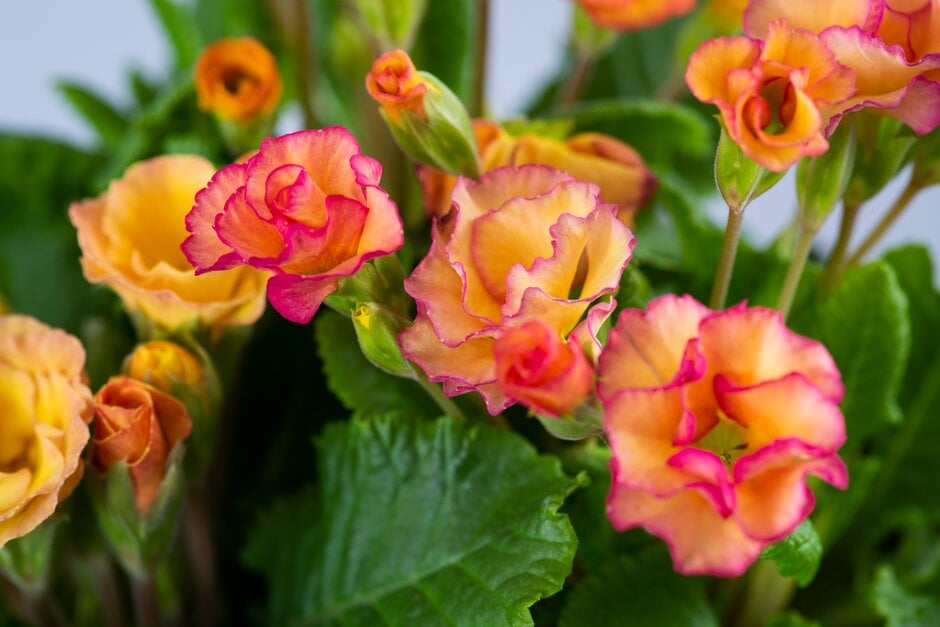Primula 'Primlet Sunrise' (Primlet Series) (Pr/Prim)
A semi-evergreen perennial with rosettes of dark green deeply-veined foliage and clusters of fragrant 'rosebud' flowers in shades of pink, yellow, orange and red with a dainty picotee edging appearing from February to May

Buy this plant
Size
Ultimate height
0.1–0.5 metresTime to ultimate height
2–5 yearsUltimate spread
0.1–0.5 metresGrowing conditions
Moisture
Moist but well–drainedpH
Acid, Alkaline, NeutralColour & scent
| Stem | Flower | Foliage | Fruit | |
| Spring | Pink Yellow Orange Red | Green | ||
|---|---|---|---|---|
| Summer | Green | |||
| Autumn | Green | |||
| Winter | Pink Yellow Orange Red | Green |
Position
- Full sun
- Partial shade
Aspect
East–facing or North–facing or South–facing or West–facing
Exposure
Exposed or Sheltered Hardiness
H6Botanical details
- Family
- Primulaceae
- Native to GB / Ireland
- No
- Foliage
- Semi evergreen
- Habit
- Bushy
- Genus
Primula are herbaceous or semi-evergreen perennials, forming a basal rosette of simple leaves, with salver-shaped or bell-shaped flowers which may be solitary or carried in an umbel or in whorls on an erect stem
- Name status
Unresolved
- Horticultural Group
- Primrose group primulas are mainly grown as herbaceous perennials, and produce clusters of flowers on individual stems from the basal rosettes, although a few may also have umbel-like flowers. They are either spring-flowering, if grown without protection, or winter- to spring-flowering, if grown as biennial container plants in greenhouses or indoors.
How to grow
Cultivation
Best planted in dappled shade in humus-rich, moist neutral to acid soil. Tolerates full sun if soil remains moist at all times. See primula cultivation
Propagation
Propagate by division between autumn and spring
Suggested planting locations and garden types
- City and courtyard gardens
- Cottage and informal garden
- Patio and container plants
- Rock garden
- Flower borders and beds
Pruning
No pruning required
Pests
May be susceptible to leafhoppers, vine weevil, slugs and snails, caterpillars and aphids
Diseases
May be susceptible to grey moulds, primula leaf spot and a virus
Get involved
The Royal Horticultural Society is the UK’s leading gardening charity. We aim to enrich everyone’s life through plants, and make the UK a greener and more beautiful place.